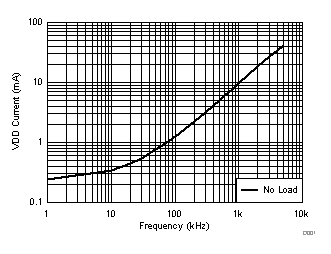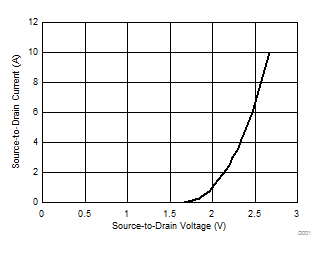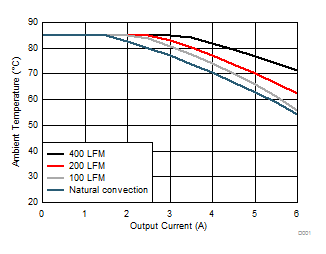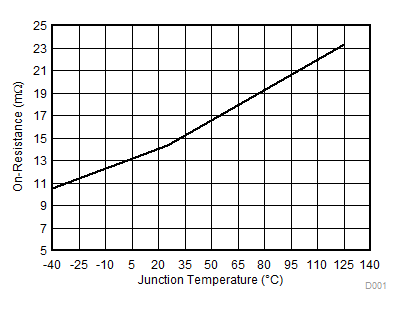SNOSCY4E March 2015 – October 2018 LMG5200
PRODUCTION DATA.
- 1 Features
- 2 Applications
- 3 Description
- 4 Revision History
- 5 Pin Configuration and Functions
- 6 Specifications
- 7 Parameter Measurement Information
- 8 Detailed Description
- 9 Application and Implementation
- 10Power Supply Recommendations
- 11Layout
- 12Device and Documentation Support
- 13Mechanical, Packaging, and Orderable Information
Package Options
Mechanical Data (Package|Pins)
- MOF|9
Thermal pad, mechanical data (Package|Pins)
Orderable Information
6.6 Typical Characteristics
All the curves are based on measurements made on a PCB design with dimensions of 3.2 inches (W) × 2.7 inches (L) × 0.062 inch (T) and 4 layers of 2 oz copper. The safe operating area (SOA) curves displays the temperature boundaries within an operating system by incorporating the thermal resistance and system power loss. A buck converter is used for measuring the SOA. Figure 2 outlines the temperature and airflow conditions required for a given load current. The area under the curve dictates the SOA for different airflow conditions.
| VDD = 5 V |

GaN third quadrant conduction.
Figure 3. Source-to-Drain Current vs Source-to-Drain Voltage 
| VIN = 48 V | VOUT = 5 V | fSW = 1 MHz |

.
Figure 4. GaN FET On-Resistance vs Junction Temperature